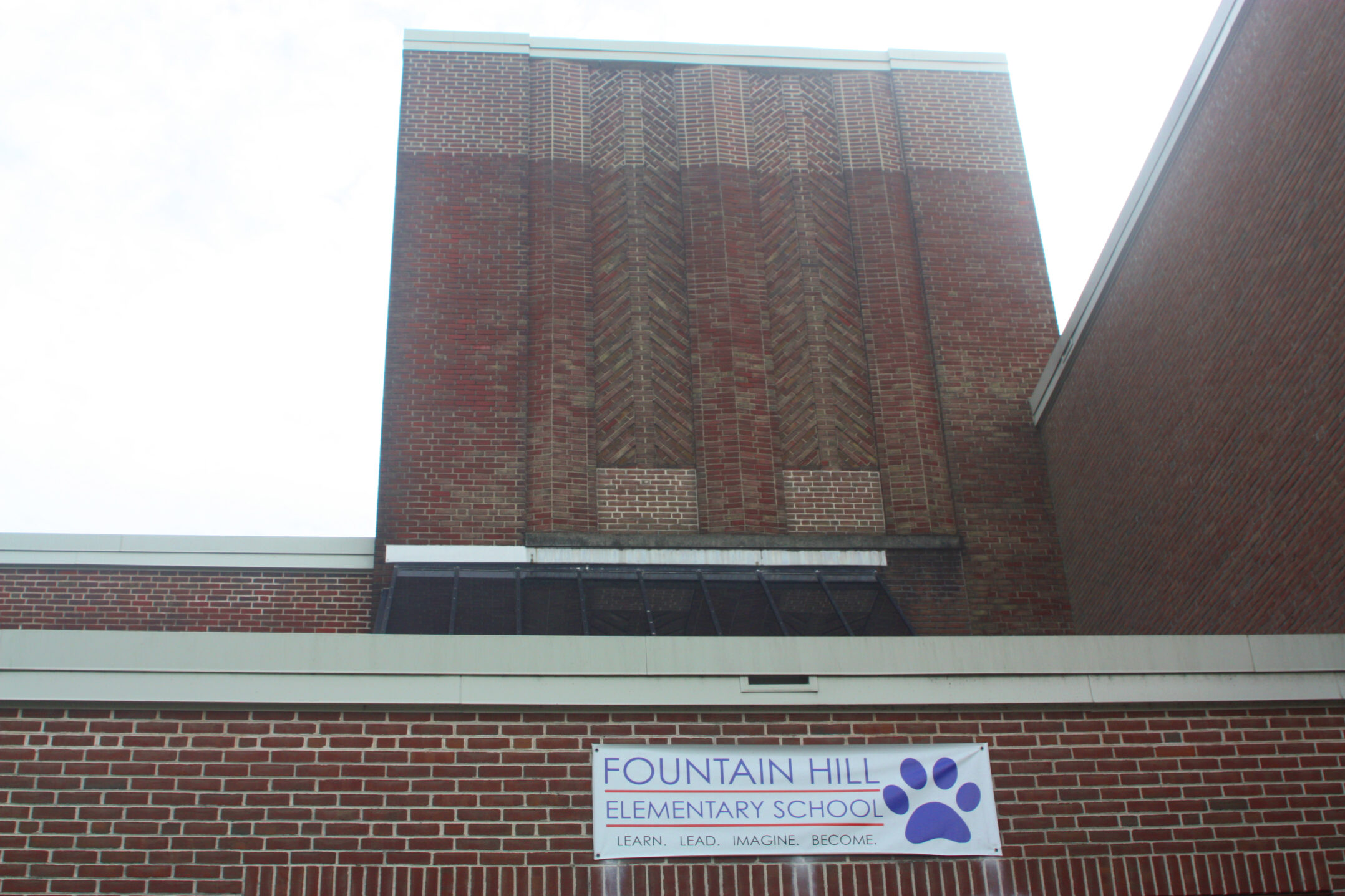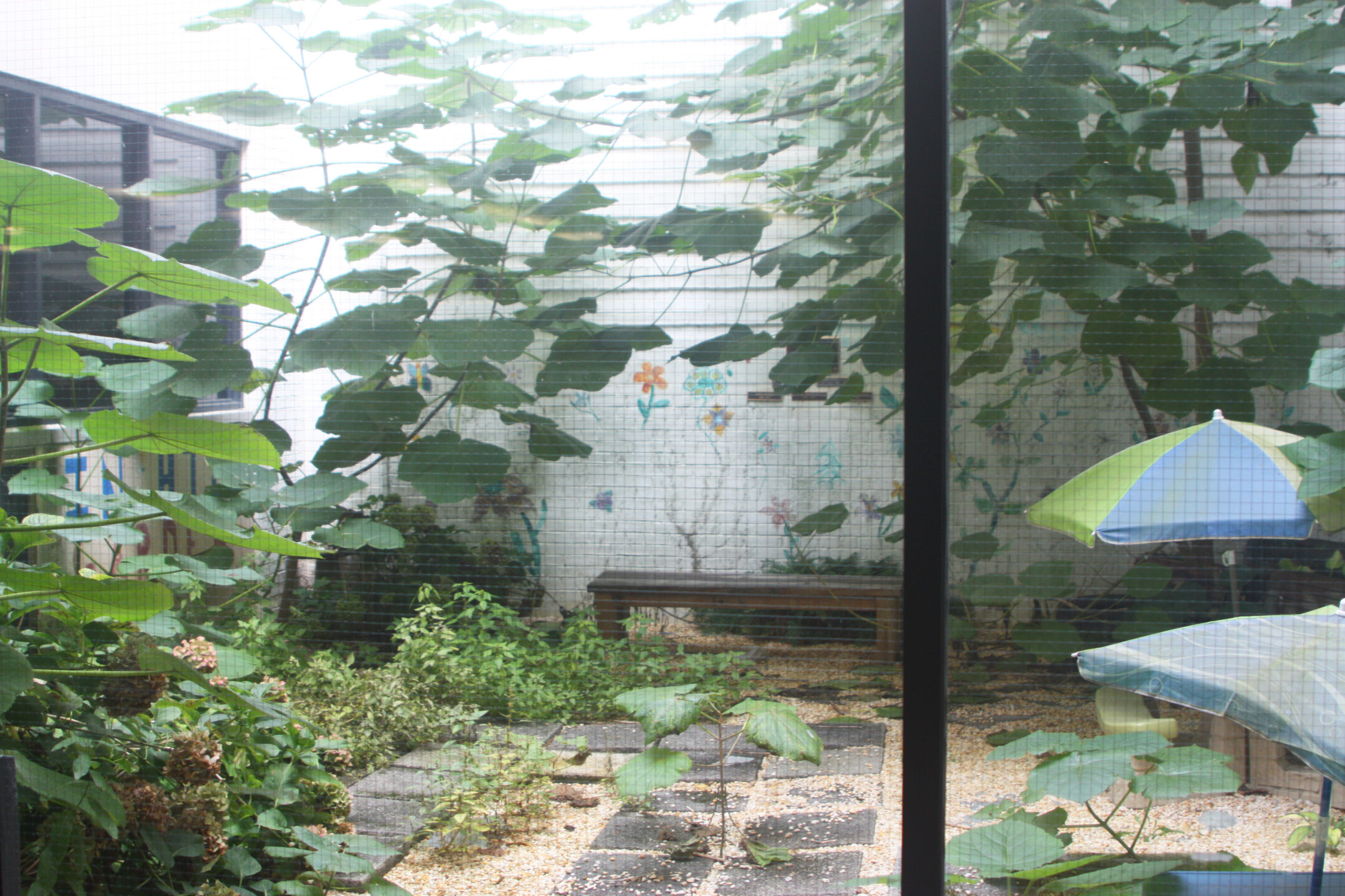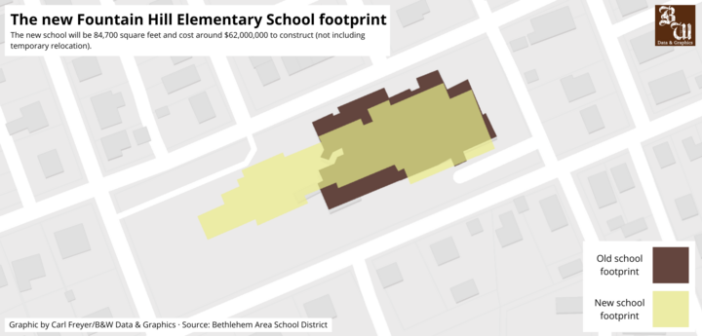Shrouded in history, Fountain Hill Elementary School was constructed in the 1930s as Fountain Hill High School and eventually became an elementary school in 1966. The building stands at 1330 Church St. and currently serves around 500 students — the second-largest building in Fountain Hill.
It will be demolished in June 2025, and a reconstructed school building will replace it by the fall of 2027.
Superintendent of Bethlehem Area School District Schools Jack Silva said the school district has planned on reconstructing Fountain Hill Elementary for years.
He said age, condition and use are some of the factors that determine the order in which buildings in the district are worked on.
Three years ago, Fountain Hill Elementary School was put at the top of the district’s necessity list after an analysis of the building, Silva said. It was determined that renovations wouldn’t sufficiently address the building’s needs, so the district opted for replacement.
The reconstruction is estimated to cost $62 million which Silva said will be the biggest construction project completed in Fountain Hill in 50 years.
The project will primarily be financed by local property taxes and indirect state funding, and public bidding will be open in January 2025.
On Sept. 23, school district leadership held a hearing where they disclosed details of the reconstruction to the public.
Arif Fazil, a representative from engineering firm CHA, said the new building is designed to fit the district’s elementary educational specifications while also serving the community.
“(The design) factors in the importance of community schools and neighborhood schools,” Fazil said. “It has a forward-thinking community center incorporated into the building… that’ll allow for integration.”
Principal architect of Alloy5 Architecture Michael Metzger further described plans for the new building at the meeting.
The building is planned to be 84,700 square feet. It will include the family and community center open to the public and a space that will serve as a combined cafeteria, gymnasium and auditorium.
There will be a new media center with an immersive learning room, which will include virtual reality, digital displays and other interactive simulations so students can have a hands-on learning experience.
Principal Courtney Stambaugh said she’s excited for this room because it’ll allow the digital literacy teacher to bring the curriculum to life for students.
Currently, about half of the school building follows an open concept floor plan. Stambaugh said she’s looking forward to the new building’s separate classrooms, which will encourage a quieter and more focused learning environment.
She said the plan for the new building incorporates learning pods, which systematically places classrooms in areas where they most benefit students.
Four grade-level classrooms will be surrounded by resources such as english as a second language, special education and reading rooms to maximize accessibility for both teachers and students.
While making these improvements, the school board has been intentional about paying homage to the building’s current structure and history. Silva said the land the school is built on was populated by indigenous populations two hundred to three hundred years ago.
When the building was built in the 1930s, its designers honored this history by incorporating Native American brickwork on the edifice’s exterior.

Native American brickwork can be seen at the front of the Fountain Hill Elementary School building. The current Fountain Hill building will be demolished in June 2025 with plans for the new building to open in the fall of 2027. (Lauren Slovensky/B&W Staff)
Silva said the new Fountain Hill Elementary building will incorporate those designs.
“(It) was important to me to make sure that we kept some continuity of not just the building, but what that school was about in the history of the area,” Silva said.
Stambaugh said she hopes the new design also preserves the current building’s memorial garden which honors deceased staff members.

A memorial garden sits in the middle of the Fountain Hill Elementary School building. The garden serves to commemorate past teachers from the school. (Lauren Slovensky/B&W Staff)
To capture memories of the current building in the new space, Stambaugh said she envisions a history wall or area where past items can be displayed.
“There’s history everywhere in this building,” Stambaugh said. “As much as people are excited to get the new building, I’m going to miss this building, and I know they will too.”
During the two-year construction, classes will be held at the former Lehigh Valley Academy Charter School in Hanover Township. Since a majority of students walk to school, bus transportation will be provided to the interim location.
Silva said keeping the students together was a priority, as opposed to sending the students to different schools or using portable classrooms.
Stambaugh said one of her goals has been keeping teachers at the forefront of the process and maintaining clear communication with them. She also said it’s important to maintain open communication with the community throughout the reconstruction period.
Stambaugh keeps parents in the loop via a weekly newsletter as well as hosting “tiger breakfasts” where families can come and hear progress updates at the school.
While all Fountain Hill families are aware of the project, Stambaugh said she isn’t sure if the younger students fully understand what’s happening.
She hopes to approach the topic with students by inviting architects, construction workers and engineers into the classroom to teach students about their careers and how they’re going to build the new school.
Stambaugh said she and Silva have been brainstorming ways they can commemorate the last school year in the current building. Some of her ideas include inviting alumni to a night at Fountain Hill where they can tour the building and reminisce.
She also hopes to encourage people to share their stories about the school and invite photographers to capture meaningful traditions and parts of the building.
Silva said he’s looking forward to how the new environment will foster a legacy of better learning for students. He said educators always have to look for ways to help their students, and he’s happy teachers will have a better space for their instruction.
“You build your buildings, and then your buildings build you,” Silva said. “I’m looking forward to that happening to a bunch of Fountain Hill kids in the future.”






Comment policy
Comments posted to The Brown and White website are reviewed by a moderator before being approved. Incendiary speech or harassing language, including comments targeted at individuals, may be deemed unacceptable and not published. Spam and other soliciting will also be declined.
The Brown and White also reserves the right to not publish entirely anonymous comments.